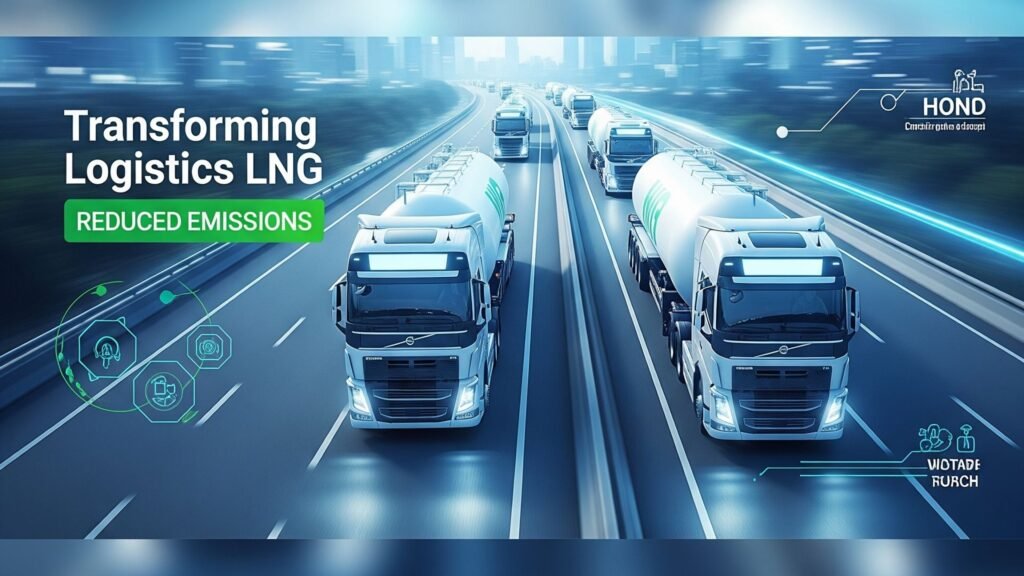Green Revolution on Wheels: LNG Trucks Transforming Logistics
A few years ago, I thought the idea of “green trucking” was more of a PR move than a real-world shift. Diesel ruled the roads, and fuel efficiency was about squeezing a few more kilometers per litre—not changing the entire fuel source.
But then I saw my first LNG-powered truck roll out of a logistics hub—and it wasn’t just quiet, it was clean, smooth, and… impressive. That’s when I realized: we’re witnessing a green revolution on wheels, and Liquefied Natural Gas (LNG) trucks are at the heart of it.
What Are LNG Trucks Really?
LNG trucks run on Liquefied Natural Gas, a cleaner-burning alternative to diesel. LNG is basically natural gas cooled to -162°C until it becomes a liquid—making it denser, more energy-packed, and perfect for long-haul transportation.
Why it matters:
- Up to 25% lower CO₂ emissions than diesel
- Near-zero particulate matter
- Lower nitrogen oxide (NOx) emissions
- Quieter engines — a huge benefit for night deliveries and urban routes
Why Logistics Needs LNG Now More Than Ever
The logistics industry is under pressure—from both regulators and customers—to reduce its environmental impact. But it’s not just about compliance anymore. It’s about staying competitive.
Here’s what’s pushing logistics companies toward LNG:
- Fuel cost volatility → LNG offers long-term cost stability
- Tightening emission norms → Especially in Europe and India
- Brand image → Green fleets = better partnerships and customer trust
- Sustainability goals → ESG reporting is becoming standard
In many ways, switching to LNG isn’t just an environmental decision—it’s a business decision.
Real-World Adoption: It’s Happening
LNG trucking isn’t just an idea in a pitch deck. It’s happening on real roads with real fleets.
- Companies like Tata Motors, Ashok Leyland, and Blue Energy Motors are rolling out LNG trucks across India.
- Logistics leaders such as Adani, GreenLine Logistics, and Reliance are investing in LNG corridors.
- Even public sector oil companies are building LNG refueling stations along major freight routes.
In Europe and China, LNG trucks already make up a growing chunk of the logistics mix—and India is catching up fast.
Benefits I’ve Seen Firsthand
I recently spoke to a fleet manager who made the switch to LNG trucks on a trial basis. His insights were fascinating:
“Initially, we thought LNG would be expensive and hard to manage. But after a few months, we saw fuel cost savings and fewer maintenance issues. Drivers actually prefer LNG trucks now—they’re quieter and smoother.”
Some real benefits he mentioned:
- Lower operating costs over time
- Longer engine life due to cleaner combustion
- Improved driver satisfaction
- Easier compliance with future emission norms
Challenges on the Road
Of course, every revolution has its bumps. LNG adoption isn’t without hurdles:
- Infrastructure – Refueling stations are still limited (but growing fast)
- Upfront vehicle cost – LNG trucks are more expensive than diesel models initially
- Training – Drivers and mechanics need to learn new systems
- Supply chain dependency – LNG supply chains are still developing in some regions
But the momentum is clearly building—and governments are stepping in with subsidies, tax benefits, and policy support.
The Road Ahead: Greener and Smarter
Imagine this: a major highway lined with LNG refueling stations, connected by smart route-planning software, with fleets that report their carbon savings in real-time dashboards.
That’s not a pipe dream anymore. It’s a real trajectory.
And in a world where every business wants to prove its sustainability credentials, LNG trucks are not just a trend—they’re a strategic move.
Final Thoughts: Drive Clean, Drive Smart
I used to think going green in logistics meant sacrificing performance or profits. But LNG trucks are proving otherwise—they’re efficient, reliable, and they make real environmental sense.
The Green Revolution on Wheels is gaining speed, and if you’re in the logistics space—this is the moment to rethink your fleet strategy.
Whether you’re managing 5 trucks or 500, LNG could be your next competitive edge.




